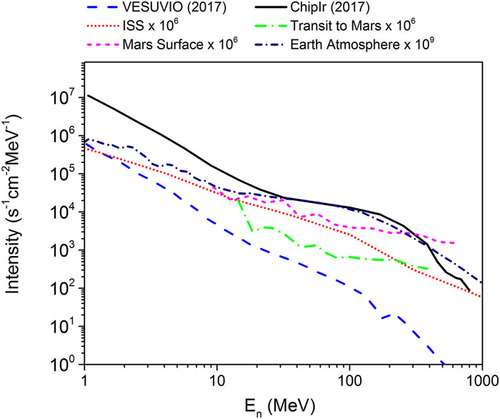Hollywood has made it easy for us to picture the dangers associated with space travel; with missions contending with everything from meteor strikes to oxygen depletion. However, one of the growing threats to space missions comes from something you cannot even see – the neutron.
In spite of their size high energy neutrons cause severe disruption to the normal operation of integrated circuits, which make up the advanced electronic devices used in space missions. These neutrons are generated by the collision of cosmic rays with the atmosphere, spacecraft components and even the surface of planets. With space missions filled with advanced electronic devices it is of great importance to thoroughly assess their robustness before they even leave the ground.
“High energy neutrons have been a significant focus of the ISIS and University of Rome Tor Vergata collaboration since 2006, which has been of success for both British and Italian communities operating in engineered systems from aviation to automotives. I expect these new results to impact on a wide range of manufacturers which are becoming more and more concerned by the neutron threat in space."
Carla Andreani, Università degli Studi di Roma Tor Vergata
With this motivation researchers from Italy and the UK have utilised two neutron beamlines at ISIS Neutron and Muon Source, ChipIr and VESUVIO, to test flash memory devices of interest for space applications.
Mimicking hundreds of thousands of years in a space environment on Earth
ISIS Neutron and Muon Source generates neutron spectra similar to that we would expect to see in space and planetary environments. Over the years many irradiation experiments have taken place at VESUVIO and this experimental activity prompted the construction of our dedicated irradiation beamline – ChipIr. ChipIr only began commissioning in 2017 and is one of the first dedicated instruments outside of the US to look at the irradiation of microelectronics with atmospheric-like neutrons.
However, VESUVIO and ChipIr subject electronic devices to a much higher flux of neutrons than they would ever be exposed to in real life. The neutron beam from VESUVIO has a 106 - 107 intensity enhancement, and the beam from ChipIr is about 100 times even more intense than that. Just one hour in the beam mimics the exposure a device would receive over hundreds of thousands of years in the real environment. This allows researchers to rapidly assess the susceptibility of their device to high-energy neutrons.
The figure below compares the neutron spectrum of VESUVIO and ChipIr with the space environment. Although the spectra from VESUVIO is softer than the atmospheric one, we can still use this instrument to test and validate the experimental and computational techniques adopted on ChipIr.

|
The neutron spectrum of VESUVIO (dotted blue line) and ChipIr (black continuous line) are compared to space environment spectrum, i.e. the International Space Station (dotted red points), Transit to Mars (green dotted line), Mars Surface (purple line) and Earth Atmosphere (black dotted line). Image reproduced from: C. Andreani et al. “Fast neutron irradiation tests of flash memories used in space environment at the ISIS spallation neutron source" AIP Advances 8, 025013 (2018) DOI: 10.1063/1.5017945
|
Susceptibility of flash memories to neutrons
We may only associate flash memory devices with mainstream applications such as mobile phones, MP3 players and digital cameras, but these gadgets are increasingly used for safety critical applications. A benchmark experiment was designed to perform accelerated tests of Flash memories of interest to Thales Alenia Space.
Previous tests on VESUVIO and ChipIr showed that the floating gate cells, which make up flash memories, were sensitive to lighter ionising particles. These particles can be produced by nuclear reactions resulting from atmosphere neutrons interacting with chip materials. It is therefore important to evaluate this flash memory device, which could potentially be used in a space environment with demanding neutron flux.
In this study 6 flash memory devices were irradiated on VESUVIO over about 6 days of beamtime, receiving 1.86 x 1010 neutrons per square cm. 6 identical devices were also irradiated on ChipIr over about 2 hours receiving 4.59 x 1010 neutrons per square cm. The samples were programmed before exposure, irradiated, and read back afterwards.
Researchers observed no retention issues related to radiation, and the memories were reprogrammed without issue after their exposure, implying no permanent damage. In this experiment ChipIr and VESUVIO successfully tested the robustness of a flash memory device against high-energy neutrons, demonstrating its potential for space applications. This result paves the way for future studies into electronic devices, which will be of great interest to a wide range of industries operating in space.
Further information
Read the full research publication here: C. Andreani et al. “Fast neutron irradiation tests of flash memories used in space environment at the ISIS spallation neutron source" AIP Advances 8, 025013 (2018) DOI: 10.1063/1.5017945
Learn more on ISIS Neutron and Muon Source instruments VESUVIO and ChipIr.
Browse all our science highlights here.
